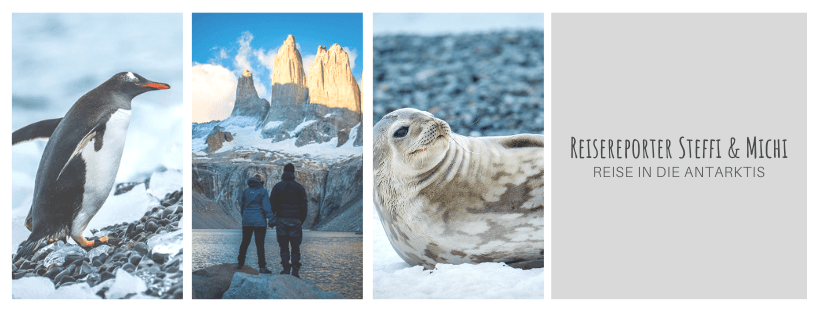Today we have a great travel reporter story for you, it’s off to the white continent. For a trip to Antarctica you have to travel more than 14,400 kilometers (as the crow flies), isn’t that crazy? Once you’ve left these kilometers behind you, one of the most mysterious landmasses on earth awaits you. Steffi and Michi made the journey and set off for the other side of the world in November 2018. A trip to Antarctica like this can’t be pulled off spontaneously; you have to plan and book such an adventure well in advance. You can find out everything about the preparation and the unique trip itself in today’s travel reporter report. Enjoy browsing!
- Preparation & Planning
- Start of the journey to Antarctica
- Life on board
- The infamous Drake Passage
- Arrival in Antarctica
- Saying goodbye & conclusion
Preparation & planning
Who doesn’t know them? The adventurous Antarctic stories* of Ernest Shackleton, Roald Amundsen, or Robert Falcon Scott. A journey to the white continent has long held a special fascination for us. But how do you plan a trip to such a remote place? How do you get there? How much time do you need? When is the best time to travel? And how much does all this fun actually cost? These and many other questions initially seemed like an insurmountable hurdle.

When we were planning our honeymoon in Patagonia, we finally thought, “If not now, when?” After some online research, we found various tour operators and expedition ships. These days, there are also numerous options for flying to Antarctica and boarding a ship there. This saves you the time and the rigors of the wild Drake Passage—certainly a good option for those with weak stomachs. However, we wanted to take the “traditional” route by ship.
The planning gradually took shape, and our vague ideas and concepts finally developed into concrete plans. We booked our cabin with Antarctica21 two years in advance to ensure we could depart on our desired date. The 6-day trip cost us $4,795 per person (including the last night at a hotel in Punta Arenas). We had to make a deposit and then paid the remaining amount six months before the trip. Two years later, the time had finally come – our trip to Antarctica began on November 29, 2018, in Ushuaia (Argentina), the southernmost city in the world. In the port city, aptly named “Puerta de entrada a la Antarctica,” we moved into our cabin aboard the M/V Ocean Nova for the next five days. Accompanied by the expedition team from the Antarctica21 operator, we moved further and further away from civilization, past Cape Horn and heading south.
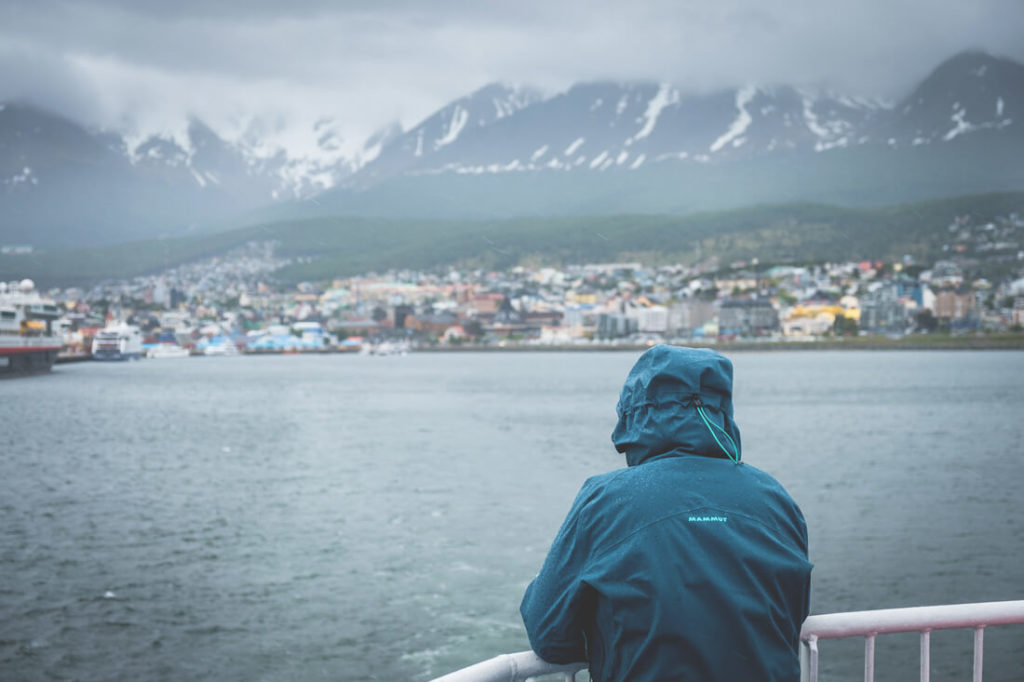
Life on Board
Anyone who imagines an Antarctic expedition ship as an adventurous, run-down fishing boat will be disappointed. The “M/V Ocean Nova” offered space for 65 passengers and 48 crew members from 26 different nations. Despite the cramped cabins, the ship boasted a large panoramic deck, a dining room, and a library. This gave us several options for passing the time on board. The days on the ship were generally quite entertaining.
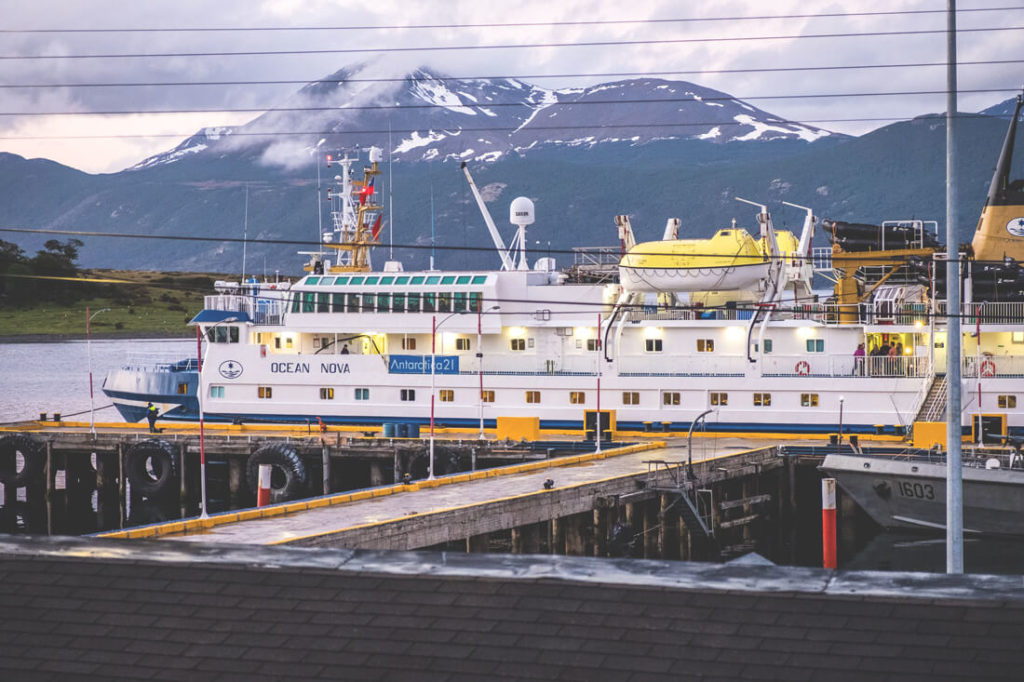
After a hearty breakfast, interesting lectures on various Antarctic topics (history of discovery, animal species, etc.) followed. Our crew included biologists, glaciologists, historians, geographers, and many other bright minds, most of whom have been traveling and exploring Antarctica for decades. In between, we lingered in the ship’s panoramic lounge and watched for the mighty albatrosses that constantly accompanied our ship.
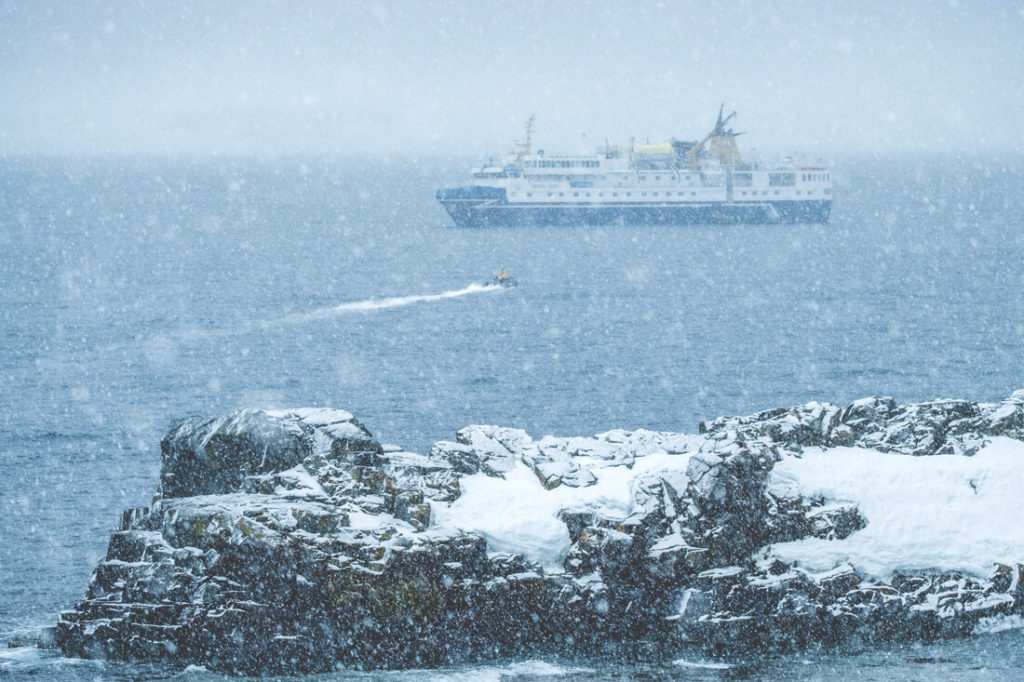
Food, lectures, and internet
The meals on board were also fantastic. In the morning, lunch and dinner were broadcast via the ship’s channel. There were various appetizers from the buffet, followed by a served main course. For the main course, you could choose between three different dishes (vegetarian, fish, or meat). Soft drinks and house wine were also available at no extra charge. During the day, there were always free self-service water, coffee, tea, and hot chocolate in the panoramic lounge, as well as instant soups and small snacks. In the afternoon, at tea time, there were also sweet pastries. We must have gained a few pounds.
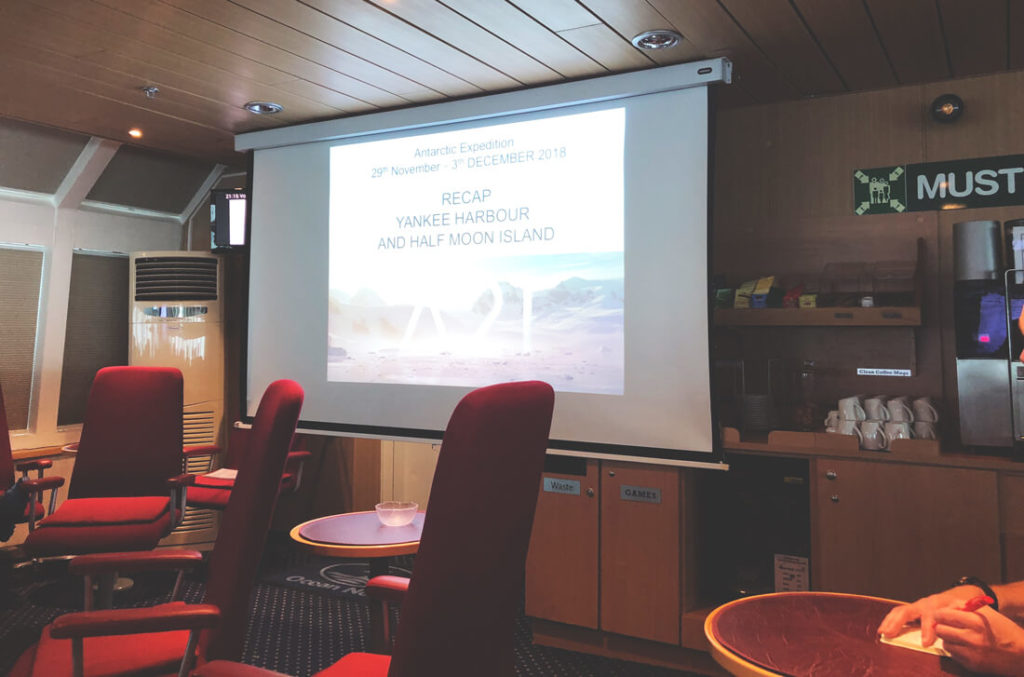
We spontaneously decided on board to purchase the available internet package for $99, so we could blog from Antarctica and keep our loved ones back home updated. All important information was promptly provided via the onboard channel. Assembly times, emergency drills, lecture times, and interesting animal sightings were relayed to the cabins via loudspeakers. This way, we were guaranteed not to miss a thing. Life together on board was very harmonious and incredibly enriching. We had the opportunity to meet people from all over the world, and everyone shared one great passion: travel. Most of them had already been to every continent on Earth and had countless stories to tell.
The infamous Drake Passage
After the first night at sea, we reached the infamous Drake Passage before dawn. Named after the British explorer Sir Francis Drake, this is the strait between Cape Horn and the Antarctic Peninsula, connecting the Atlantic and Pacific Oceans. Here—literally between the oceans—the sea is often particularly rough and with high waves. And from that moment on, it rocked… sometimes more, sometimes less, but it rocked. Always—24 hours a day. While sleeping, eating, and even showering, the constant up-and-down movement of the small expedition ship was noticeable. Like a roller coaster ride—except you couldn’t just get off.
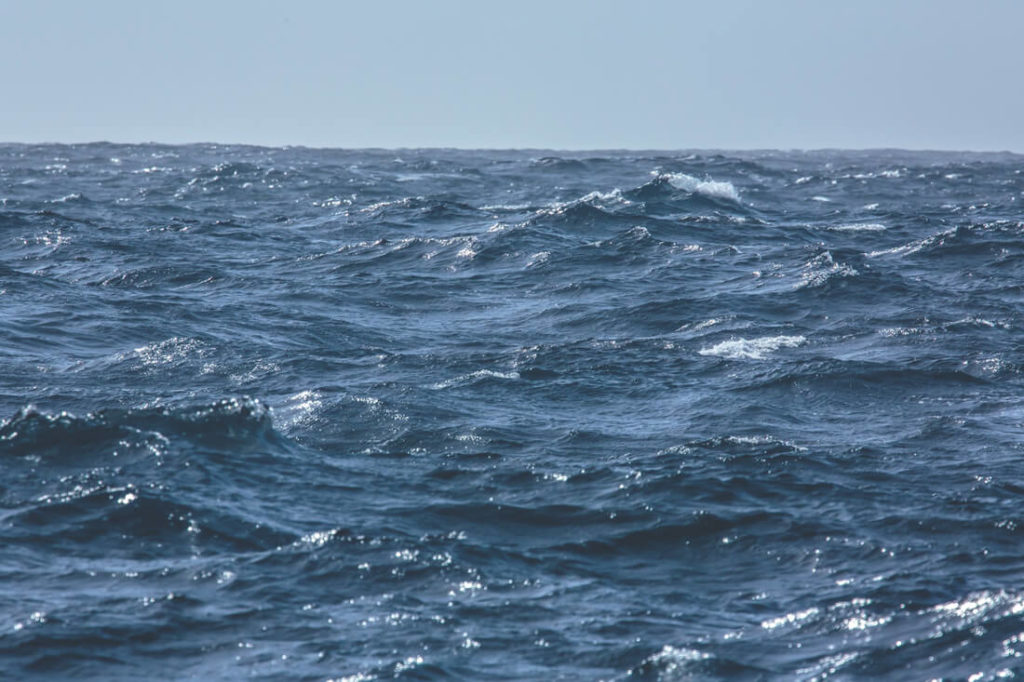
Simple things like brushing teeth, tying shoes, or quickly fetching a coffee suddenly became a challenge and a balancing act. Therefore, everything in the cabins had to be tied down or placed on non-slip mats. We passengers all teetered around the decks and in the corridors, while the seasoned crew of Antarctica21 strolled casually around the ship. Respect to all the sailors who navigated this passage centuries ago in simple sailing ships without much protection from wind and weather.

Then seasickness catches you
While the dining room was still well-filled on the first day, it gradually dwindled. Many of the passengers were lying in bed seasick. And how were we feeling? Actually, quite fine. We were among the ten people who had been spared so far. Either we had become hardened sailors by then, or we owed our well-being to consistent self-medication with Stugeron (motion sickness tablets). Probably the latter.
An on-board doctor was available for passengers who suffered from seasickness. We still recommend bringing your own medication and taking it consistently from the start – just to be on the safe side. According to the crew, the waves in the Drake Passage were moderate (3-4 meters high). We can’t imagine what would have been worse weather and even rougher seas.
Arrival in Antarctica
On the third day at sea, we reached an important milestone on our journey: We passed the 60th parallel south and were thus officially in Antarctica. On the fourth day, after a wild ride in a Zodiac, we set foot on the white continent for the first time. We were able to explore Yankee Harbour on Greenwich Island. The bay is surrounded by a curved stone and pebble beach. Tens of thousands of gentoo penguins breed above the beach.

Weddel Seals, Gentoo Penguins, and Orcas
An icy wind whipped around our noses. What a fantastic feeling. We’d barely stepped out of the Zodiac when the first Weddell seal appeared and briefly raised its head in interest before drifting off to sleep. Gentoo penguins waddled in the distance. After a short briefing by the crew on land, we were allowed to explore the small bay for two hours. We were generally free to move around Yankee Harbour. Red flags marked boundaries that had to be observed for safety and animal welfare reasons.

We pinched ourselves – no, we weren’t dreaming, we were actually at the end of the world. Seeing and observing the countless penguins in the wild was breathtaking and indescribable. We were deeply grateful to have been able to experience this and were completely overwhelmed emotionally. In the afternoon of the same day, we explored Half Moon Island. This small island lies between Livingston and Greenwich Island. It is just two kilometers long and is home to countless chinstrap penguins. We had another two hours to explore the island, observe the many penguins, and look out for killer whales (orcas).



Saying Goodbye & Conclusion
Unfortunately, it was time to say goodbye much too soon. From the “Base Presidente Eduardo Frei Montalva” – yes, there is an airfield in Antarctica – we flew back to the South American mainland, Punta Arenas (Chile), in about two hours. On the plane, we finally had time to process the countless impressions of the past few days.
The barren and rugged beauty of Antarctica has to be experienced to be believed and is difficult to put into words. Experiencing the countless penguins and seals in their wild at the end of the world was something surreal. We highly recommend this experience to every adventurer. Every moment is priceless, and the many impressions and experiences will remain a part of us forever.
